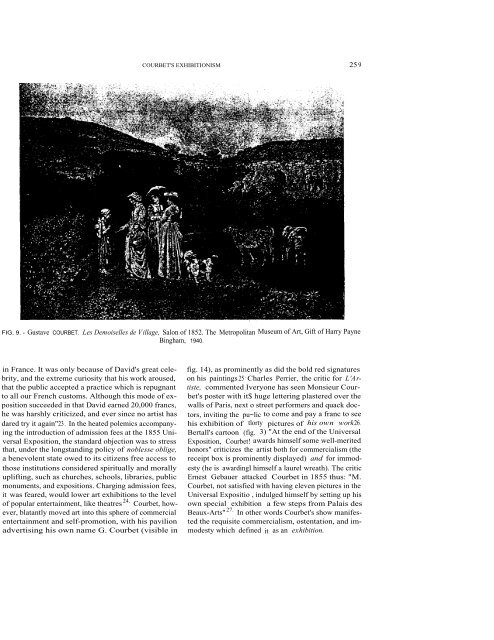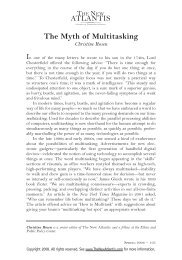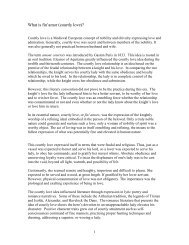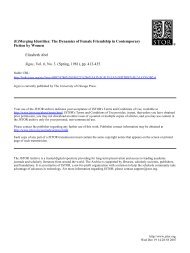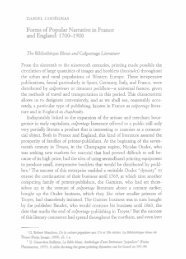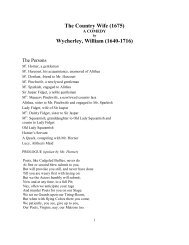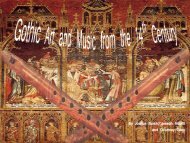Courbet's Exhibitionism
Courbet's Exhibitionism
Courbet's Exhibitionism
Create successful ePaper yourself
Turn your PDF publications into a flip-book with our unique Google optimized e-Paper software.
in France. It was only because of David's great celebrity,<br />
and the extreme curiosity that his work aroused,<br />
that the public accepted a practice which is repugnant<br />
to all our French customs. Although this mode of exposition<br />
succeeded in that David earned 20,000 francs,<br />
he was harshly criticized, and ever since no artist has<br />
dared try it again"23 . In the heated polemics accompanying<br />
the introduction of admission fees at the 1855 Universal<br />
Exposition, the standard objection was to stress<br />
that, under the longstanding policy of noblesse oblige,<br />
a benevolent state owed to its citizens free access to<br />
those institutions considered spiritually and morally<br />
uplifting, such as churches, schools, libraries, public<br />
monuments, and expositions. Charging admission fees,<br />
it was feared, would lower art exhibitions to the level<br />
of popular entertainment, like theatres 24. Courbet, however,<br />
blatantly moved art into this sphere of commercial<br />
entertainment and self-promotion, with his pavilion<br />
advertising his own name G. Courbet (visible in<br />
COURBET'S EXHIBITIONISM 25 9<br />
FIG. 9. - Gustave COURBET. Les Demoiselles de Village, Salon of 1852. The Metropolitan Museum of Art, Gift of Harry Payne<br />
Bingham, 1940.<br />
fig. 14), as prominently as did the bold red signatures<br />
on his paintings 25 . Charles Perrier, the critic for L'Artiste,<br />
commented Iveryone has seen Monsieur <strong>Courbet's</strong><br />
poster with it$ huge lettering plastered over the<br />
walls of Paris, next o street performers and quack doctors,<br />
inviting the pu~lic to come and pay a franc to see<br />
his exhibition of tlorty pictures of his own work26 .<br />
Bertall's cartoon (fig. 3) "At the end of the Universal<br />
Exposition, Courbet! awards himself some well-merited<br />
honors" criticizes the artist both for commercialism (the<br />
receipt box is prominently displayed) and for immodesty<br />
(he is awardingI himself a laurel wreath). The critic<br />
Ernest Gebauer attacked Courbet in 1855 thus: "M.<br />
Courbet, not satisfied with having eleven pictures in the<br />
Universal Expositio , indulged himself by setting up his<br />
own special exhibition a few steps from Palais des<br />
Beaux-Arts" 27. In other words <strong>Courbet's</strong> show manifested<br />
the requisite commercialism, ostentation, and immodesty<br />
which defined it as an exhibition.


